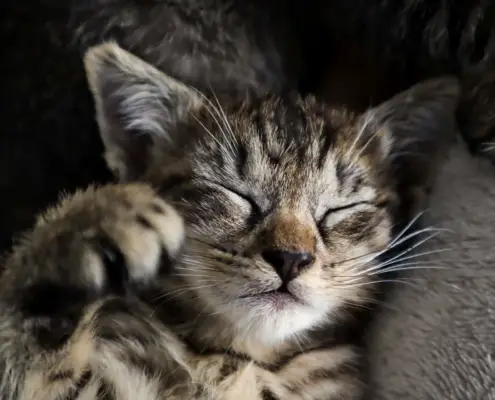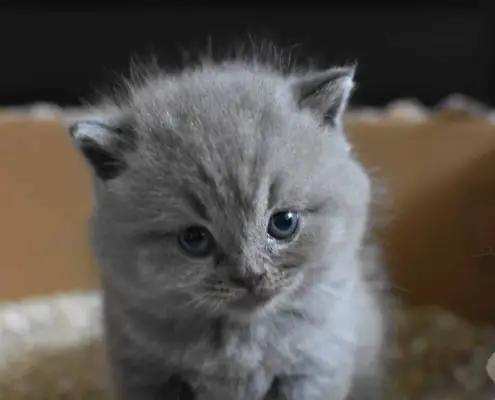
Cats are fascinating creatures with their own unique personalities and behaviors. Just like humans, they have distinct learning styles that influence the way they acquire and retain information. Understanding your cat’s learning style can greatly enhance your ability to train and teach them new behaviors. In this article, we will delve into the different types of cat learning styles, explore how to identify your cat’s learning style, and discuss effective training methods tailored to each style.
The different types of cat learning styles
Just as in humans, cats exhibit various learning styles. Some cats are visual learners, relying heavily on observation to understand and imitate behaviors. These cats excel in learning through watching their human companions or other cats perform certain actions. On the other hand, auditory learners rely more on sound cues and verbal commands. They respond well to voice commands and clicker training, where a distinct sound is associated with a specific behavior. Lastly, there are kinesthetic learners, who prefer a hands-on approach. These cats learn best through physical interaction, such as using their paws or body to explore and manipulate objects.
How to identify your cat’s learning style
Identifying your cat’s learning style is essential for effective training. Observe how your cat responds to different stimuli and cues. If your cat quickly imitates behaviors they see, they may be a visual learner. An auditory learner may respond more promptly to voice commands or the sound of a clicker. Kinesthetic learners may exhibit a preference for using their paws or body to interact with objects. Experiment with different training techniques and observe your cat’s response to determine their learning style.
To further understand your cat’s learning style, pay attention to their body language during training sessions. Visual learners may maintain eye contact and watch your every move. Auditory learners may tilt their heads towards the sound source or perk up their ears when you give a command. Kinesthetic learners may actively engage with objects or demonstrate a curious nature when presented with a new item. By closely observing your cat’s behavior, you can gain valuable insights into their preferred learning style.
Tailoring training methods to your cat’s learning style
Once you have identified your cat’s learning style, it’s important to tailor your training methods accordingly. For visual learners, use demonstrations and visual cues to teach new behaviors. Show them how to perform the desired action and provide positive reinforcement when they imitate correctly. Auditory learners respond well to voice commands and clicker training. Use a distinct sound, such as a click, to mark the desired behavior and follow it with a reward. Kinesthetic learners benefit from interactive toys and hands-on activities. Encourage them to explore and manipulate objects to reinforce the desired behavior.
Remember to be patient and consistent in your training approach. Understanding your cat’s learning style allows you to communicate effectively and set them up for success. By using training methods that align with their preferred style, you can create a positive and rewarding learning experience for your feline companion.
Common challenges in training cats and how to overcome them
Training cats can sometimes be challenging, but understanding their learning style can help overcome common obstacles. One challenge cat owners often face is getting their cat’s attention. Visual learners may be easily distracted by their surroundings, while auditory learners may become overwhelmed by loud noises. To overcome this, create a calm and quiet environment during training sessions. Minimize distractions and choose a time when your cat is most receptive to learning.
Another challenge is motivating your cat to participate in training. Cats are known for their independent nature, and some may be less interested in training sessions. With visual learners, use toys or treats to capture their attention and reward them for their efforts. For auditory learners, find their favorite vocal cues or sounds to motivate them. Kinesthetic learners may require more interactive toys or objects to engage with during training.
Consistency is key when it comes to training cats. Cats thrive on routine, so establish a regular training schedule and stick to it. Be patient and understanding, as each cat learns at their own pace. Celebrate small victories and provide positive reinforcement to encourage progress. By overcoming these challenges and adapting your training methods to your cat’s learning style, you can create a harmonious learning environment for both you and your feline friend.
Best practices for teaching new behaviors to cats
Teaching new behaviors to cats requires a thoughtful and structured approach. Regardless of their learning style, there are some best practices that apply to all cats. Firstly, break down the desired behavior into smaller steps. Cats learn more easily when they can grasp each individual action before moving on to the next. This helps prevent overwhelm and promotes a positive learning experience.
Secondly, use positive reinforcement to encourage and reward your cat’s efforts. Cats respond well to praise, treats, and playtime as a form of motivation. When your cat successfully performs the desired behavior, provide immediate reinforcement to reinforce the connection between the action and the reward. Consistency is essential in reinforcing the behavior, so be sure to reward your cat each time they perform correctly.
It’s also important to keep training sessions short and engaging. Cats have short attention spans, so aim for sessions that last no more than 10-15 minutes. This keeps them interested and prevents boredom or frustration. End each session on a positive note, even if your cat hasn’t fully mastered the behavior yet. This leaves them feeling accomplished and eager to continue learning in future sessions.
Understanding the role of positive reinforcement in cat training
Positive reinforcement is a fundamental aspect of cat training. It involves rewarding desired behaviors to encourage their repetition. Cats respond well to positive reinforcement because it creates a positive association with the behavior and motivates them to continue performing it. This method of training is more effective and humane than using punishment or negative reinforcement.
When using positive reinforcement, it’s important to provide the reward immediately after the desired behavior is performed. This helps your cat make the connection between the behavior and the reward. Use treats, toys, or verbal praise as rewards based on your cat’s preferences. Over time, your cat will associate the behavior with the positive reinforcement and be more likely to repeat it.
Positive reinforcement also helps build a strong bond between you and your cat. It creates a positive and trusting relationship based on rewards and encouragement. This approach fosters a sense of cooperation and mutual understanding, making training sessions enjoyable for both you and your feline companion.
Case studies: Success stories of cats and their learning styles
To illustrate the effectiveness of understanding cat learning styles, let’s explore some success stories of cats and their unique learning styles.
Case Study 1: Bella, the Visual LearnerBella, a curious and observant cat, excelled in learning new behaviors through visual cues. Her owner, Sarah, used a demonstration approach to teach Bella how to use a scratching post. Sarah would scratch the post herself, followed by praising Bella when she imitated the behavior. Bella quickly learned to use the scratching post and stopped scratching the furniture.
Case Study 2: Max, the Auditory LearnerMax, an energetic and vocal cat, responded best to auditory cues during training. His owner, Alex, used a clicker to mark the desired behavior, followed by a treat. Max quickly associated the click with the reward and began performing the desired behaviors, such as sitting or coming when called, upon hearing the clicker.
Case Study 3: Luna, the Kinesthetic LearnerLuna, a playful and hands-on cat, learned best through physical interaction. Her owner, Emily, used interactive toys and puzzles to teach Luna new behaviors. For example, Emily introduced a puzzle feeder to encourage Luna to eat more slowly. Luna quickly figured out how to manipulate the puzzle and enjoyed the mental stimulation it provided.
These case studies demonstrate the power of tailoring training methods to a cat’s learning style. By understanding their preferred style, you can create personalized training approaches that yield successful results.
Resources for further reading on cat learning styles
For those interested in delving deeper into the topic of cat learning styles, here are some recommended resources:
- Book: “The Science of Cat Learning Styles” by Dr. Emily Johnson
- Online Article: “Understanding Visual Learners: Training Tips for Cats” – CatTrainingBasics.com
- Online Course: “Unlocking Your Cat’s Learning Potential” – CatEducationCenter.com
These resources provide valuable insights and practical guidance for understanding and working with your cat’s unique learning style.
Embracing your cat’s unique learning style
Understanding the learning style of your cat is a valuable tool in their training and education. By recognizing their preferred style, you can tailor your training methods to create a positive and effective learning experience. Whether your cat is a visual, auditory, or kinesthetic learner, they are capable of acquiring new behaviors and skills. Embrace their unique learning style, be patient, and enjoy the journey of unlocking the secrets of feline education.
If you enjoyed my article, I would appreciate you sharing it with your network.

Sima Ndlebe
Sima writes for CatBuzz. He is interested in Cats, Health and Fitness, and Entrepreneurship.
Published: 8 May 2024



